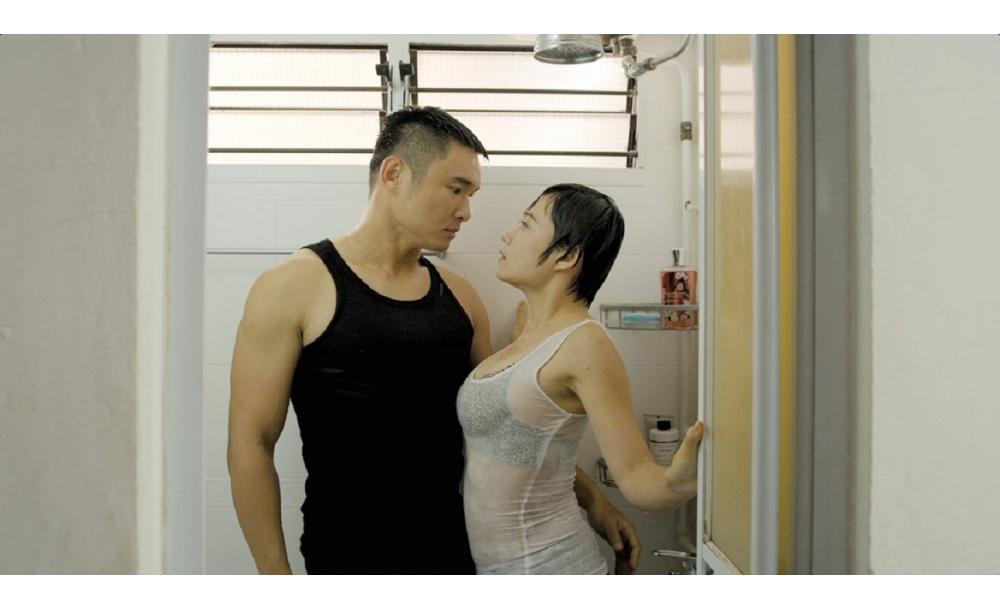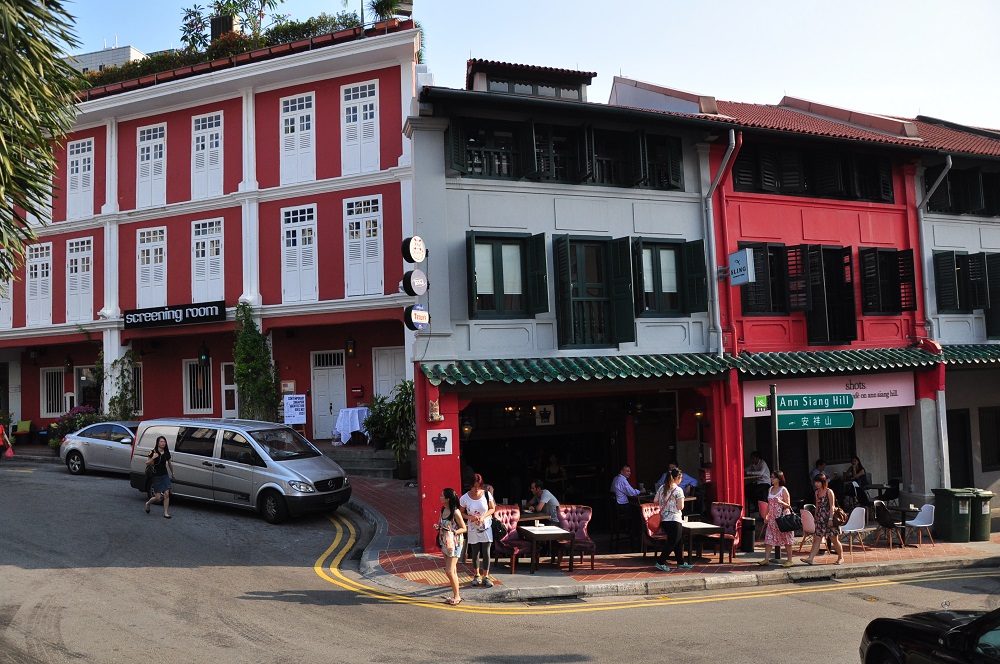Take a walk down any street and you’ll see a kaleidoscope of faces—of numerous races—greeting you. Yet, when visitors (and even many locals) think of Singapore, all that comes to mind are the picturesque, traditional visages of the Chinese, Malays and Indians.
It’s true that the three main races make up most of our nation’s population. But that’s still a rather general look at who we are. After all, the choices available at any hawker center clearly indicate that Singapore prides itself on its diversity. You only have to scratch the surface to uncover the myriad of denizens on our tiny island.
Most of you know of the “others”—as they are labelled on the many forms we have to regularly fill in. Chances are that you have some friends who belong to that mysterious group of people. But how much do you really know about them and their cultures? That peculiar “fourth race” isn’t just one community of people; it’s a melting pot of races, religions and communities, along with atypical archetypes of the three main races.
We decided that it’s about time to turn the spotlight on these minorities, and to show that, despite their comparatively small number, collectively they’re still a very important part of who we are as a nation—and not just another category on a form.
You’re Asian?
The Eurasians have a long and rich history that includes our second and one of our most beloved presidents, Dr. Benjamin Sheares. The culture has produced the popular, mouth-watering and hot as hell dishes, Feng and Devil’s Curry. But above all else, ask anyone the first thing that comes to mind about Eurasians and chances are they’ll tell you the same thing: they love a party.
Antoinette Yzelman, a 30-year-old reports coordinator, says, “There is this idea that all Eurasian guys are Casanovas.” She adds with a laugh, “Which is true sometimes.” Shannon Dragon, a 26-year-old flight attendant, says, “Can’t say I honestly know much, if anything, about our traditions but if I had to pick one it’ll probably be where …” He pauses momentarily, and with a thoughtful look and a cheeky grin, adds, “Hmm. Nope, sorry. I can’t put that in print.”
Flirtatious? That’s still debatable. But there’s one thing that Eurasians most certainly know how to do, and that’s have fun. Their weddings are perfect examples of just how Eurasians love a good party, or as Shannon sums it up, Eurasians “can’t seem to go for a wedding and leave straight after dinner.” Antoinette adds, “Eurasians do enjoy having a good time, but not always at the expense of other more important things. It’s a balance of work and play.”
Descended (largely) from European men who married Asian women, the Eurasian culture boasts heritages from all over Europe, such as Danish, Portuguese, French, German, Swedish and British. Yet despite the differences in their ancestry, the Eurasians have a bond in their small community that holds strong. While they’re arguably one of the most well-known minorities, Eurasians still do encounter their fair share of misconceptions.
“I think the funniest one I’ve heard about was that we come from Eurasia,” says Shannon, breaking into a laugh. But this easy-going race usually just shrugs off the stereotypes as part of the culture. After all, there is much about themselves they take pride in. “I’m rather proud of the uniqueness of my culture,” says Antoinette. “We are an unusual blend of East and West.”
There is one particular moniker derived from the culture and heritage that the Eurasians have accepted as their unofficial nickname: Gragok—a slang term that loosely translated means “shrimp.” The Eurasians on the whole have adopted this as their own little “friendly racial slur,” even though it originally referred specifically to Malaccan Portuguese shrimp fishermen. It reveals that, like any other race, the Gragoks are not without their stereotypes, although it seems that some are embraced a lot more than others.
Says Shannon: “I think some of the stereotypes I’ve heard are that most Eurasians speak fairly good English, we’re pretty good looking, we make a killer Devil’s Curry, we’re good looking, we’re mostly extroverts, we’re good looking …”
Mix and Match
In a more understanding day and age like ours, interracial relationships are pretty commonplace. This obviously wasn’t always the case though. Old-fashioned thinking and self-imposed social stigmas used to limit mixed marriages. The children of these unions, of course, make for quite the anomaly. They’re not a culture all their own like the Eurasians, and they take specific traits (behaviorally and physically) from both of
their parents.
“I usually just tell people that I’m Indian-Chinese. Most people leave it at that, but some ask about my parents’ heritage,” says Haresh Suppiah, a 24-year-old student at the National Institute of Education and self-proclaimed “Chindian”. Tracey Ow, a 24-year-old retail associate and descendant of a Chinese father and Singhalese mother, says: “Usually I just say I’m Chinese. Then they give me a look of disbelief, so I tell them that I’m very mixed and it’s too complicated to explain,” she says with a laughs.
As if being of two cultures isn’t enough to give these so-called “rojaks” a headache in terms of identity issues, the tendency of people—who don’t know any better—is to simply make their own assumptions. It’s the most common story among the mixed and one that (as both Tracey and Haresh will attest to) can get awfully tiresome after a while.
“There have been quite a few incidents where people assume that I’m Malay and they start speaking to me in Malay. They only realize that they assumed wrongly when I give them an ‘I don’t know what you’re talking about’ look,” says Haresh with a groan. Tracey says, “Here’s a good one. I’ve been mistaken once for a Pakistani!”
But there are perks to being stuck dead center in the middle of two races … like reaping the benefits of all their major holidays. “To be honest, the best part of being mixed when I was younger was being able to collect money during Chinese New Year and Deepavali,” says Haresh with a smile. “Being mixed also allows me to fit into different ethnic cliques quite easily. I was quite fortunate that I wasn’t shunned for not fitting into the traditional race groups that we’re familiar with in Singapore.” Grinning, Tracey says, “I just love the look on people’s faces when I start speaking Mandarin, because I definitely do not look like one who can!”
At the end of the day though, the two sides of their heritage have had very little effect on them. As Haresh puts it, mixed races don’t turn out the way they do because of their heritage. “I believe that the traits that we portray as individuals are an amalgamation of family, friends and personal experiences,” he elaborates. “So, I would have to say that I’m not really inclined to either race in terms of characteristics.”
This is a Modern World
Sikhs in Singapore are a minority, but with their unique turbaned appearance, they’re one that certainly stands out. With such a rich history, for a religion that’s comparatively rather young, many Sikhs still maintain the physical appearance that set them apart all those centuries ago.
“The distinctive look of Sikhs came about on our holy day Baisakhi in 1699, when Guru Gobind Singh asked for five men to give up their lives for him,” explains Balraj Maan, a 24-year-old finance speculator. “Instead of killing them, they each went on to represent one of the five things a traditional Sikh must have—long hair, a comb, a bangle called a karra, a small sword called a kiripan, and a type of shorts called kachera. It’s our form of baptism.”
Yet, with such a strong understanding and devotion to his faith, Balraj manages to surprise many when they realize that he is very obviously not a traditional Sikh, but part of a growing minority within this minority—the modern Sikh.
Casting aside those distinctive features of the culture for something more “fitting with the general consensus,” modern Sikhs have had their faith thrown into question—ironically enough, mostly by non-Sikhs.
“A lot of my uncles are traditional; completely staunch followers of the ways of Sikhism. But there has never been a rift between us,” he elaborates. “Like the Catholic church, Sikhism understands that we have to move forward with time. Just because you’re not traditional does not mean that your faith isn’t strong. I actually know a lot of modern Sikhs who are very religious.”
Balraj points out that, unlike other ethnicities that are adamant about their offspring continuing established traditions, the older generation of Sikhs are completely understanding of the newer ones’ need to blend in with the mainstream culture. “It’s an open religion,” he says. “That’s why I’m really proud of being a Sikh. I don’t follow the traditions—because I was raised that way—but I’ve never questioned my faith.”
But it isn’t just fitting in that drives Sikhs to shed their traditional appearances. Some go for the more “normal” look simply because of uneducated stereotypes. “A lot of people are actually afraid of us,” says Balraj in disbelief. Thoughtfully, he adds, “People simply need to take the time and realize that, even though Sikhs generally look different, we are just like everyone else.”
The Quiet Side
The Jewish community here is so small that it would be no surprise to know most Singaporeans don’t even realize that there is one. But, believe it or not, they’ve been here since the time of Raffles, with such prominent members as Mr. David T. Marshall, the country’s first chief minister. They used to be a much larger group in their own right till after World War II, when a huge number of them emigrated to Australia, the US and Israel.
“It’s the same as any other minor religion and community,” says Ramesh Ponnusamy, a 26-year-old expatriate from Australia and an electrical engineer, on how little most Singaporeans know of the local Jewish community. “I don’t know if there is a need to represent the religion more in the mainstream conciousness though, if it’s got so few members here. I mean, the local community’s only around 200 strong. I personally don’t think it’s necessary unless we have some major issues we need addressed.”
While Ramesh doesn’t exactly appear as your stereotypical idea of a Jew—his father is Hindu and originally from Singapore and his mother is Jewish from Poland—he’s still a practicing one, but more in smaller ways.
“My family still observes the Shabbat,” he says, referring to the Jewish weekly day of rest, also known as the Sabbath, which lasts from before sundown on Friday till after nightfall on Saturday. “It’s not a traditional form of Shabbat though. It’s just us sitting around and having a really large meal.
“When I was in Australia, I was at this beach once. And in a house nearby, there were these kids from a Jewish school on holiday,” he relates. “It was during the Sabbath, when we’re not allowed to do any mechanical work. So, these guys couldn’t even turn off their lights when they wanted to go to sleep.
“They came out and asked me to help them and I told them I was Jewish on my mother’s side,” he recalls. “They said that I definitely couldn’t help them because I was a ‘Jew from a Jewish womb’.”
When asked if he felt like a little detached from Singaporean culture, coming from such a small and rather quiet minority here, Ramesh laughs it off. “Man, I’m a ‘Hinjew’!” he jokes. “I feel detached everywhere!”
But in all seriousness, Ramesh does feel a little out of place at times, not so much because of who he is, but of how little is known of his culture.
“It’s not that I’m not proud of who I am. I most certainly am,” he says, then continues to explain, “It’s just that a lot of other races tend to get uncomfortable around me when I tell them that I’m Jewish. Most people here have probably never even met a Jewish person before, so it’s a bit jarring for them. So, I don’t try to hide or lie about my religion … but I omit it. If anyone asks, I’ll just tell them my dad’s Hindu and my mom’s Polish.”
Come Again?
We’re constantly bombarded with Speak Mandarin campaigns. Heck, there are even some companies out there that actually enroll their employees in Mandarin classes. With so much importance being placed on the ability to speak the language, it almost seems like a social stigma not to be able to speak it. Even more so if you’re Chinese.
The most common nickname for them is “OCBC”, that is, “orang Cina bukan Cina,” which, loosely translated from Malay, means “Chinese people who aren’t Chinese.”
“I could never master it,” says Brandon Ng, a 26-year-old customer service officer. “We speak English at home, so I never had to use it much in my daily life. None of my parents took Mandarin as their second language. It was never introduced into my upbringing until I went to kindergarten,” relates his girlfriend, 24-year-old student Celina Chong.
“I remember the first day,” elaborates Celina on her early days when she found out how different she was from other Chinese. “Everyone around spoke nothing but Mandarin, and I couldn’t understand what they were talking about. So, naturally, I asked my maid—the only adult around at that time—what they were conversing about. And she responded, ‘Just look out for kids who look nothing like you and they will speak your language.’ And surprisingly, it worked! I made my first best friend who was half Chinese and half Eurasian.”
Being Chinese and not being able to converse in Mandarin has earned this minority within a majority some not-so-friendly and downright disgusted reactions from their linguistically proficient peers.
“The worst I’ve had would be ‘due lian’ which means, ‘shameful’. That, I definitely could understand,” says Brandon, looking a little annoyed. “I’ve heard everything from ‘What a disgrace!’ to ‘She’s a banana’ [yellow skin, but white inside] to ‘She eats potatoes’!” says Celina with a snigger. “It came to a point where I went for a job interview, and they didn’t hire me just because I told them that I could only speak limited Mandarin and not read or write it.”
The couple agrees that, while most of the time they don’t get any flak for not being able to speak the language, there have been some people who have taken things beyond exclamations of disdain.
“There were these guys who actually excluded me from their social circle, simply because I couldn’t speak Mandarin,” says Brandon, still visibly surprised as he relates the incident. “I can’t believe there are still people with such a backward mentality these days.”
With such social pressure, Celina and Brandon have tried to pick up Mandarin, but with a background that’s firmly planted in speaking solely English, it wasn’t easy. “Oh, yeah … I definitely tried,” relates Brandon. “But after a while, I just got so tired of it. It felt like I was forcing myself to, just for the sake of speaking it.”
“If it was simplified and everything was in hanyu pinyin [where the words are written in Roman letters], I’d probably have no problem,” says Celina. “The only thing I mastered in Mandarin classes was hanyu pinyin. My entire textbook was scribbled in English, just so I could read the passages!”





